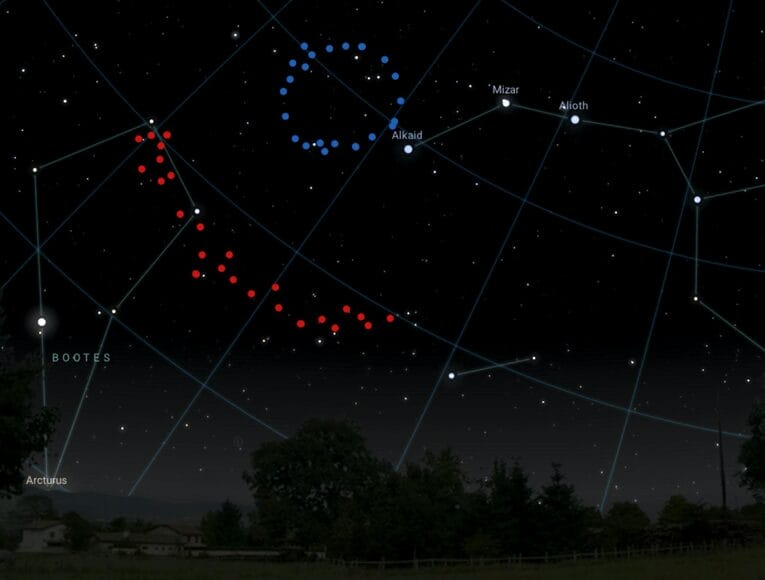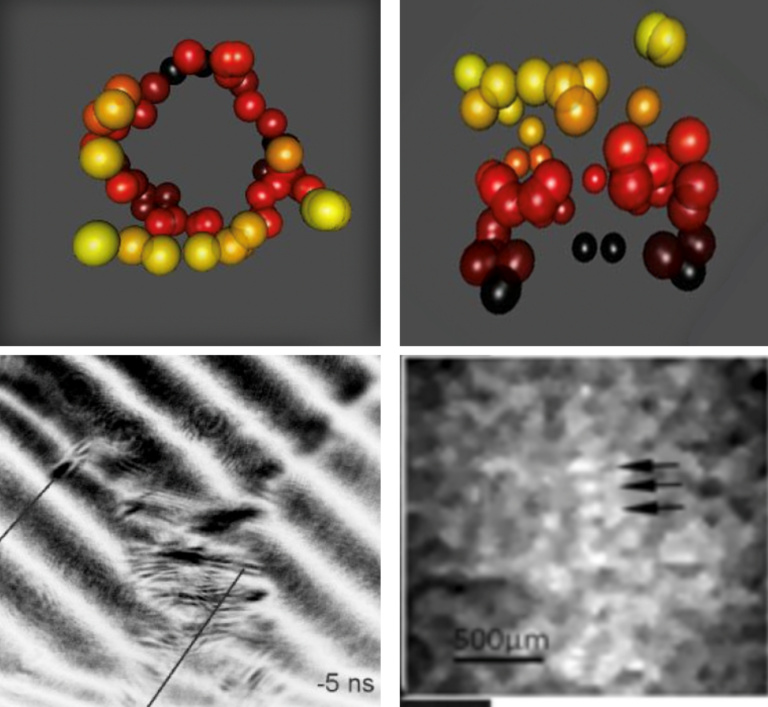The year 2024 started off with a new flood of important astrophysics discoveries that further contradicted the Big Bang hypothesis. The first, literally the biggest, is the discovery of the Big Ring—a huge structure of galaxies that is too big for the Big Bang, but which exactly matches predictions LPPFusion Chief Scientist Eric Lerner made almost 40 years ago. Those predictions in turn are based on theories of the same plasma vortex filaments that are central to the functioning of our FF-2B experimental fusion device. Lerner explains the significance of this discovery in more detail in this new video.
The Big Ring was discovered by Alexia Lopez (fig. 2) , a graduate student at the University of Central Lancashire in the UK. She used large survey of the quasars, giant explosions deep in space. The spectra of the quasars showed distinctive dips where magnesium atoms absorbed light in galaxies along the line of sight to the quasars. Just three years ago, in 2021, Lopez made a similar discovery of a Giant Arc (Fig.3). The Big Ring, she and colleagues calculated was at least 1.2 billion light years across.

Figure 2. Alexia Lopez, University of Central Lancashire graduate student and discoverer of the Big Ring and Giant Arc.
This is extremely significant because objects as large as the Big Ring and Giant arc don’t have time to form in the 14 billion years since the hypothetical Big Bang. The Big Bang hypothesis predicts that no objects should exist that are more than about a billion light years at the extreme outside limits. The Ring and Arc are the latest of several objects discovered by different groups of observers that exceed that limit. Since the Ring and ARC are in the same part of the sky, at the same distance and the center of curvature of the arc lies within the Ring, it seems more than possible, Lopez and co-authors write, that “together they form an even more extraordinary cosmological system,” 10 billion light years or more across, although that will require more data to confirm.

Fig. 3 The newly-discovered Big Ring (blue) joins the 2021-discovered Giant Arc (red) to sprawl across constellations. However, the galaxies that compose them are far too faint to be seen with the naked eye.
While astrophysicist have not yet actually admitted the new structures are too old for the Big Bang, prominent cosmologists like Sabine Hossenfelder have expressed concerns that they violate the most fundamental assumption underling the Big Bang/cosmic expansion hypothesis—the so-called Cosmological Principle. This Principle is actually an assumption that the universe, at the largest scales, is homogenous and isotropic everywhere—that is completely smooth and featureless. This assumption, together with the theory of general relativity, leads to the prediction that the universe is expanding (or contracting). Without this assumption, no such expansion or contraction is necessary or expected.
Although the Big Ring and Giant Arc are yet another contradiction of Big Bang predictions, they exactly confirm predictions based on the hypothesis that the Big Bang never happened. In 1986, Lerner published results that used Hannes Alfven’s theories of plasma filaments to predict quantitively the development of structure in the universe, just given the interaction of the plasma filaments, formed by electric currents and magnetic fields, with gravitational attraction. He found that the vortex filaments would grow to 5 billion light years in radius before gravitational forces became powerful enough to start contracting them into the hierarchy of structure we now observe. They would then contract into a compressed set of disks of plasmas about 1.2 billion light years in radius. The process would take, Lerner calculated trillions of years, far longer than the time allowed by the Big Bang hypothesis.
If the universe is not expanding—as abundant observational evidence indicates—the dimensions of distant objects are larger than that calculated for an expanding universe. In the case of a non-expanding universe, the radius of the circle the Giant Arc is part of is 5 billion light years, just exactly that predicted for a primordial vortex filament and the radius of the Big Ring is 1.1 billion light years very close to that predicted for a compressed disk.
Not only are the dimensions of the Ring and the Arc as predicted by plasma theory, but so is the detailed shape of the Ring. Lopez and colleagues found that the galaxies in the Ring are in a tight helix(fig.4). This is exactly the form that a plasma vortex filament must take because the currents in the filament have to align with the magnetic field. This characteristic shape extends upward from filaments in a plasma focus fusion device that are microns across, the star-forming clouds light years across to the Big Ring a billion light years in radius.

Figure 4. The Big Ring in 3D shows a helical pattern typical of plasma filaments in view along the axis(top left) and perpendicular to the axis (top right).Such tight helixes appear in the dense plasma focus, as in the PF-1000 device in Warsaw (bottom left) and LPPFusion’s FF-1 device (bottom right). The radius of the PF-1000 helix is 3 mm and that of FF-1 is 60 microns. Over a range of scales of 1029, almost a quadrillion quadrillion, plasma dynamics remain very similar, as Hannes Alfven first pointed out in the 1960’s.
We will be talking about other recent developments in the cosmology debate in future reports.
